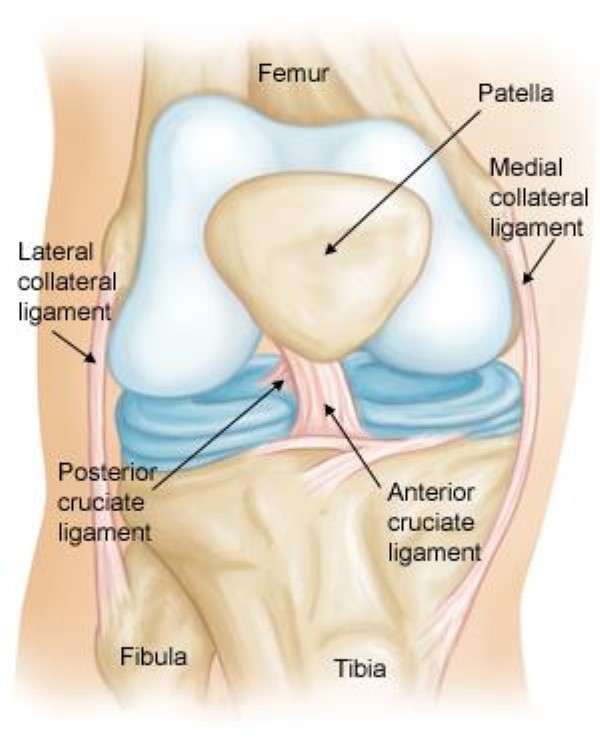What are they?
The anterior Cruciate Ligament (ACL) attach bone to bone. The Cruciate Ligaments are in your knee. There are two cruciate ligaments;
- the Anterior Cruciate Ligament (ACL),
- and your Posterior Cruciate Ligament (PCL).
They act to stop your thigh bone (Femur) sliding forward or backward on your shin bone (Tibia).
How do they get injured?
Although your cruciate ligaments are very strong, they can be damaged. The usual mechanism of injury is during fast paced sport when your foot is planted but the top of your leg and body continues to move. This puts an extreme amount of force through the ligaments and can cause them to stretch, or even rupture. Sports which this more commonly happens in include netball, skiing, football and basketball. The Anterior Cruciate Ligament (ACL) is more frequently injured than the Posterior Cruciate Ligament (PCL) and accounts for 40% of all sporting injuries. Women are more likely to injure their ACL rather than men due to their anatomy and muscle function.
What does it feel like?
Ligament ruptures can be extremely painful and often cause immediate swelling at the injured area. Often people feel or here a ‘pop’ at the time of injury. How is it diagnosed? Your physiotherapist or doctor can predict an ACL injury with some simple tests. If we suspect an ACL rupture we will refer you to a specialist and further investigations may be done such as Magnetic Resonance Imaging (MRI) to confirm the injury. We may recommend surgery if you have completely torn your ACL.
How can Back In Action Physiotherapy help?
One of the most common symptoms of an ACL rupture is loss of full movement and strength in your affected leg. Here at Back in Action Physiotherapy we can work to regain movement with hands on techniques such as mobilisations and massage, and help to maintain and build strength in your leg. You will probably find it difficult to walk on your leg so we will work on getting you back on your feet. We can discuss options with you including conservative rehabilitation and/ or surgery. Strengthening your knee before surgery is also important to ensure the best post- operative outcome. It may take 9-12 months to be back to normal after this injury. For more information regarding the length of recovery and the reasons why, check out our ACL blog.

